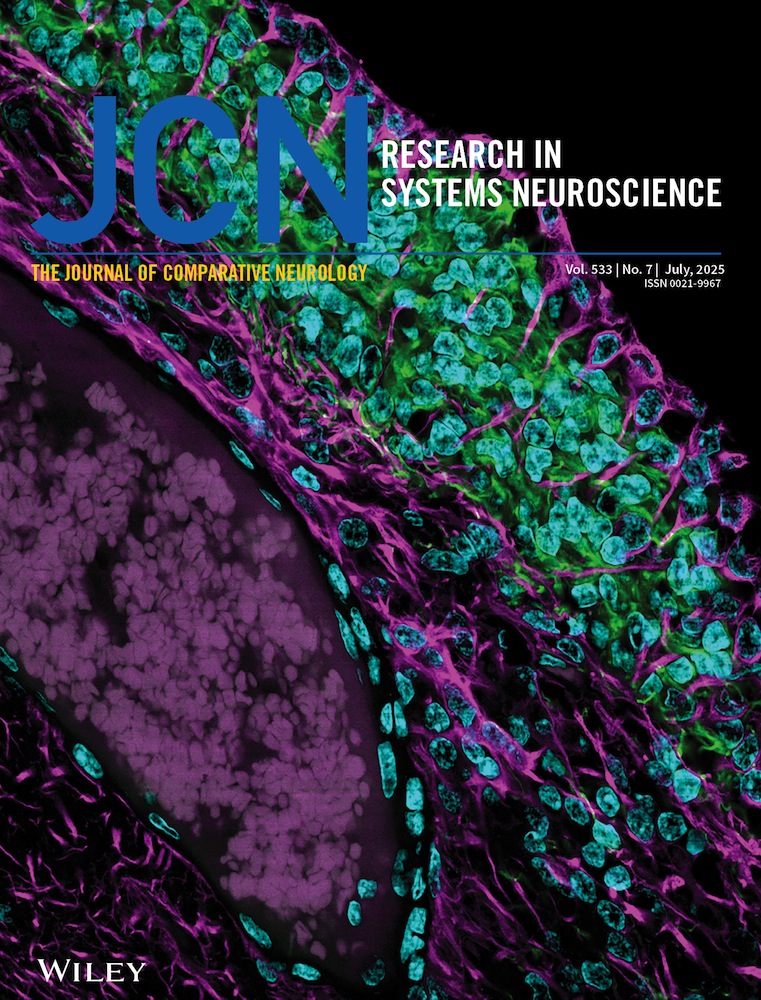The distribution of tyrosine hydroxylase, dopamine-β-hydroxylase, and phenylethanolamine-N-methyltransferase immunoreactive neurons in the feline medulla oblongata
Abstract
The distributions and morphological characteristics of neurons displaying immunoreactivity to the catecholamine synthetic enzymes tyrosine hydroxylase (TH), dopamine-β-hydroxylase (DBH), and phenylethanolamine-N-methyltransferase (PNMT) were examined in adjacent sections of the feline medulla oblongata. TH-positive neurons were found in two bilaterally symmetrical columns in the ventrolateral and dorsomedial medulla. Within the ventrolateral medulla, TH-positive neurons were found within the lateral reticular formation throughout the entire rostrocaudal extent of the medulla. In the dorsomedial medulla, TH-immunoreactive perikarya were localized to the nucleus of the tractus solitarius including the commissural subnucleus, the dorsal motor nucleus of the vagus, and the area postrema. DBH-positive neurons had distributions and morphologies similar to those of the TH-immunoreactive cells with three exceptions: TH-positive neurons far outnumbered DBH-positive neurons in the area postrema; slightly greater numbers of TH-positive neurons were seen in the commissural nucleus of the tractus solitarius; and, caudal to the obex, only TH-positive neurons were seen within the dorsal motor nucleus of the vagus.
PNMT-immunoreactive neurons were found in all the nuclear regions of the medulla where both TH- and DBH-positive neurons were seen. However, the PNMT immunoreactive perikarya had a somewhat more restricted distribution along the rostrocaudal axis. In the ventrolateral medulla, PNMT-positive cells extended rostrally only as far as the retrofacial nucleus and caudally only to the obex. Within the dorsomedial medulla, PNMT immunoreactive cells were found from just rostral to the area postrema to the medullary-spinal cord junction. These findings demonstrate that the distributions of TH, DBH, and PNMT immunoreactive perikarya in the medulla of the cat are generally similar to those seen in the rat insofar as these neurons are arranged in longitudinal columns in both species. However, significant differences exist with regard to the cytoarchitectonic borders within which immunoreactive perikarya can be found and the rostrocaudal extent of the PNMT-positive cell groups in these two species.




